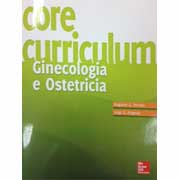338. Cytoreductive surgery and hyperthermic intraperitoneal chemotherapy in ovarian and gastrointestinal peritoneal carcinomatosis: results from a 7-year experience.
(http://jgo.amegroups.com/index)
Giulia Montori, Federico Coccolini, Paola Fugazzola, Marco Ceresoli, Matteo Tomasoni, Carolina Rubicondo, Stefano Raimondo, Domenico Pinelli, Michele Colledan, Luigi Frigerio, Luca Ansaloni Unit of General and Emergency Surgery, Unit of Hepato-biliary Surgery and Liver Transplantation, Unit ofGynecology and Obstetrics, ASST Papa Giovanni XXIII, Bergamo, Italy.-
Background: An increasing promising evidence and increasing long-term oncologic outcomes support the
use of cytoreductive surgery (CRS) and hyperthermic intraperitoneal chemotherapy (HIPEC) as locoregional treatment for peritoneal carcinosis (PC) especially from ovarian and gastrointestinal tumors, but also for others cancers.
Methods: A prospective monocentric study was performed in Papa Giovanni XXIII Hospital, Bergamo (Italy).
Patients and tumor characteristics were analyzed. Overall survival (OS), disease free survival (DFS) and morbidity were analyzed with Kaplan-Meier curves and log-rank testing.
Results: A total of 150 patients undergone CRS + HIPEC were analyzed from January 2011 to June 2017.
The principal origins of PC were: gastric cancer (GC) (n=40), colon cancer (n=31), appendiceal cancer (AC) (n=18), ovarian cancer (OC) (n=49), others (n=12). Major morbidity [≥3 Common Terminology Criteria for Adverse Events (CTCAE)] and perioperative mortality rates were 38% and 2.7% respectively. Re-operation rate was 15.3%. Median OS is 9, 35, 47, 51, 82 months (29% 3-year OS; 27% 5-year OS; 48% 5-year OS; 40% 5-year OS; 67% 5-year OS respectively) in GC, colorectal cancer (CRC), OC, others tumors and AC respectively. Median DFS is 4, 14, 17, 19, 82 months (32% 3-year DFS; 22% 5-year DFS; 29% 5-year DFS;
11% 5-year DFS; 67% 5-year DFS respectively) in GC, CRC, others tumors, OC and AC respectively.
Conclusions: A therapeutic approach that combined CRS + HIPEC could achieve long-term survival in
selected groups of patients with PC from gastrointestinal, gynecological and others tumors with acceptable morbidity and mortality. A good expertise and a high volume of patients are necessary to manage PC and to further improve results.
Keywords: Peritoneal carcinosis (PC); colorectal cancer; appendiceal cancer (AC); gastric cancer (GC); ovarian cancer (OC); hyperthermic intraperitoneal chemotherapy (HIPEC); cytoreductive surgery (CRS); others tumors Submitted Oct 13, 2017. Accepted for publication Nov 20, 2017.
doi: 10.21037/jgo.2017.12.04
Introduction Peritoneal
Peritoneal carcinosis (PC) remains a poor prognosis disease. However several steps have been made to understand PC and to prevent it.
Many studies reported worst prognosis especially for secondary PC from some tumors like gastric cancer (GC). Others tumors as colon and appendiceal cancer (AC) seem to have better outcomes especially if the diagnosis is performed precociously. PC from pseudomyxoma peritonei [or disseminated peritoneal adenomucinosis (DPAM)] has a very good response to the local treatment with survival rates at 10 years more than 63% (1). On the other hand, others PC from less common diseases are currently being studied to evaluate the role of local treatments [cytoreductive surgery (CRS) and hyperthermic ntraperitoneal chemotherapy (HIPEC)]. Gynecological tumors, especially ovarian cancer (OC), have been studied for first and for a longer time. However until today there were no definitive data. A recent randomized controlled trial (RCT) published in N Engl J Med (2) about 245 patients with advanced-stage OC reported that the addition of HIPEC to interval cytoreductive surgery resulted in longer recurrence-free survival and overall survival (OS) than surgery alone and did not result in higher rates of side effects.
However, despite the histological differences between various tumors, very good results are reported in literature in the treatment of PC compared to no-treat approach.
The key point for the success and the good outcomes is still reaching the completeness of cytoreduction (CC) removing all macroscopic disease and treating the microscopic tumor cells in peritoneal cavity with the intraperitoneal chemotherapy, both with a therapeutic or a prophylactic intent.
The main prognostic factors, according to the literature, are the peritoneal cancer index (PCI) and the CC.
In this paper our 7 years’ activity in treatment of PC in Papa Giovanni XXIII Hospital in Bergamo is reported.
Morbidity, mortality and re-operations rates of about 150 cases of PC from different origins (gastrointestinal, gynecological and others less common tumors) are analyzed. The study included a total of 150 patients treated with CRS combined with HIPEC from January 2011 to July 2017 in Papa Giovanni XXIII Hospital. This is a prospective observational study focusing on patients undergoing HIPEC for different gastrointestinal tumors {colorectal cancer (CRC), AC [divided into DPAM and peritoneal mucinous carcinomatosis (PMCA)], high-grade non-mucinous carcinoma (PCA), GC}, gynecological tumors (OC and uterine cancer) and other tumors (sarcomas, duodenal tumor, histiocytoma, breast tumor, mesothelioma, olangiocarcinoma).
All patients had an Eastern Cooperative Oncology Group (ECOG) performance status ≤1, without extraabdominal disease. According with the pre-operative images [computed tomography, positron emission tomography (PET), magnetic resonance, endoscopic ultrasound, oesophagogastric endoscopy, colonoscopy, exploratory laparoscopy] the peritoneal disease was debulkable. Patients with hepatic metastases were included only if hepatic lesions were easily resectable (with wedge or segmentectomy resections) and they were treated with the collaboration of expert hepatobiliary surgeons.
Patients, tumors characteristics and pre-operative data are reported in Table 1 for the different pathologies.
Collected data were: age, gender, tumor histology, American Society of Anesthesiologists (ASA) score, primary tumor or recurrence, synchronous or metachronous PC, tumor stage (TNM) before HIPEC, presence or absence of liver metastasis, neoadjuvant chemotherapy in primary tumors or adjuvant chemotherapy for recurrent tumors, exploratory laparoscopy.
